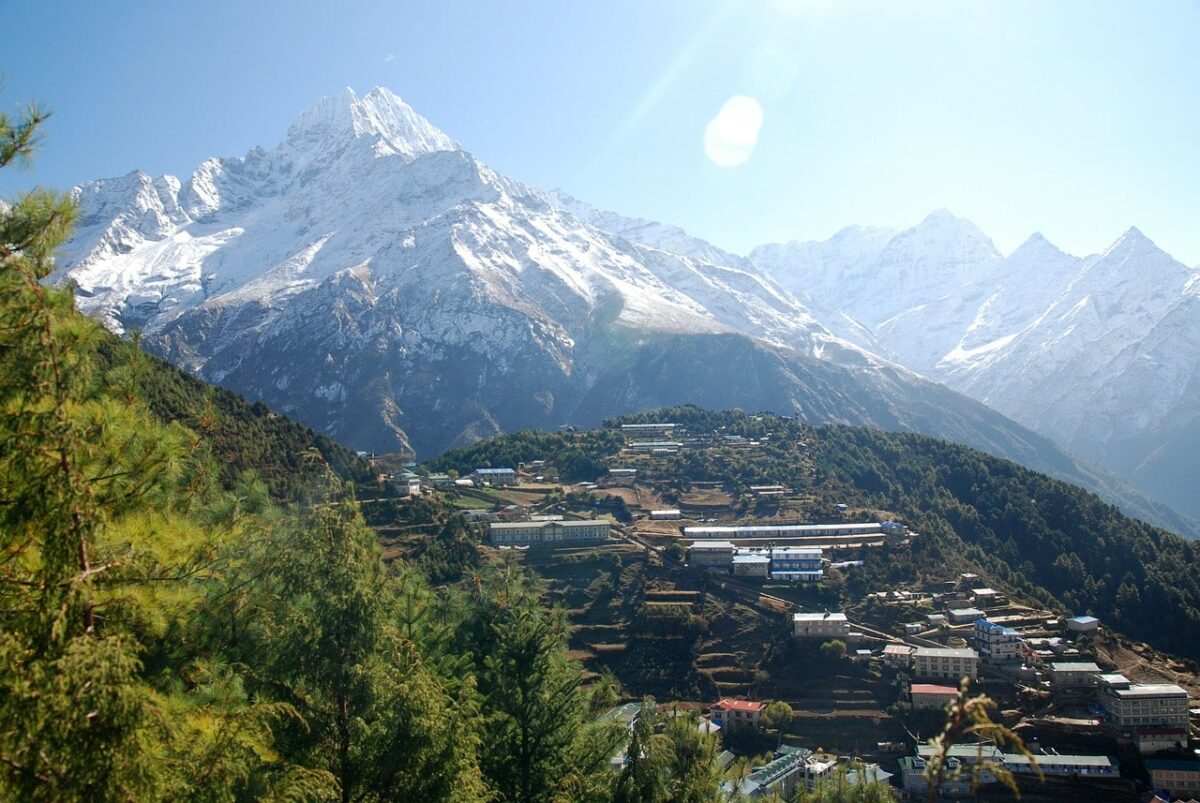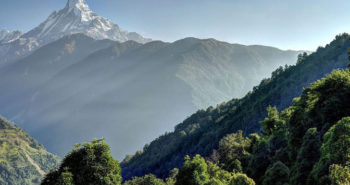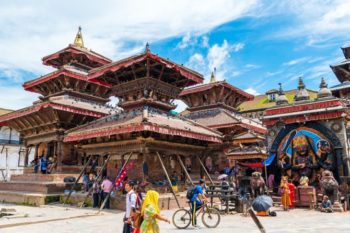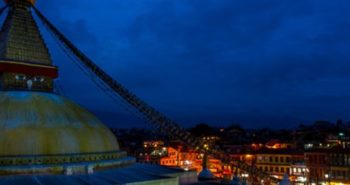Everest Base Camp Altitude and the way to deal with it
Everest Base Camp is one of the highest trekking routes in the world. It begins at Lukla Airport with a height of 2,600m / 8,530 ft and goes to a height of 5,500m / 18,044 ft at Kalapatthar.
That is not to say that you will be trekking at over 5,000m daily. The route to EBC takes you to different altitudes daily. To enable you to trek for 12-plus days at these heights, we ensure you are well-acclimatized as necessary. We also guarantee our guides are well-trained in spotting altitude-related illnesses and know what to do in such cases.
Breakdown of Altitude Changes: A Day-by-Day Guide to the Everest Base Camp Trek
The key to great trekking is to take it slowly. Allow your body to adjust to the altitude, climate, and daily cardio workout. And enjoy yourself! It is not a trail running a marathon (if that is your thing, it is held annually in the Everest Region).
To give you an idea of the heights you will reach on the EBC Trek, here are the daily changes in altitude. You should keep in mind that, on average, humans can and do begin to feel the effects of altitude at 3,000 – 3,500m / 9,842 – 11,482 ft.
- Day 1 Kathmandu to Lukla – 2,600m (8,530 ft)
- Day 2 Lukla to Phakding – 2,610m (7,086 ft)
- Day 3 Phakding to Namche Bazar – 3,440m (11,286 ft)
- Day 4 Acclimatization Day at Namche Bazaar
- Day 5 Namche Bazar to Tengboche – 3,860m (12,664 ft)
- Day 6 Tengboche to Dingboche – 4,410m (14,468 ft)
- Day 7 Acclimatization Day at Dingboche
- Day 8 Dingboche to Lobuche – 4,940m (16,207 ft)
- Day 9 Lobuche to Gorakshep – 5,368m (17,611 ft) & Kalapattar 5,500m (18,044 ft)
- Day 10 Gorakshep to Pheriche – 4,371m (14,340 ft) & hike to EBC 5,364m (17,598 ft)
- Day 11 Pheriche to Namche – 3,440 m (11,286 ft)
- Day 12 Namche to Lukla – 2,600 m (8,530 ft)
- Day 13 Lukla to Kathmandu – 1,324m (4,344 ft)
As you can see, you steadily increase your altitude over a period of several days, including acclimatization days. This mediates the health problems associated with high altitude. Going up too fast and/or without acclimatization is extremely risky. You can know more about Everest Base Camp Trek Distance and total average time you have to walk in a day.
The Importance of Acclimatization on the Everest Base Camp Trek
You may be interested to know that climbing Mount Everest could only take around 4 or 5 days from Base Camp to Summit and back. But the average expedition spends two months on the mountain preparing the equipment and their bodies. No one is expecting to fly in, complete this mammoth climb, and fly back again in a few weeks! It’s all about getting used to the altitude.
Even though no one is climbing to such great heights on any of the treks in Nepal, the same principle exists: acclimatize, acclimatize, acclimatize.
For the average person, acclimatization is extremely important. If you have trained hard for this trek or already live at altitude in your home country (or spent time at altitude somewhere else directly before coming to Nepal), you might acclimate faster. But why take the risk?
This trek is not about endurance. We do not expect anyone to be a Bear Grylls on the trek, eating bugs, running up mountains, and putting their body under stress. We expect you to enjoy this trek and come out unscathed!
But seriously, we cannot stress the importance of acclimatization enough. What may be a headache in the morning could develop into a life-threatening High Altitude Cerebral Edema (HACE) by the evening. And the problem with HACE or other serious altitude illnesses is that, as we will explain below, you are unable to make clear decisions for yourself. Decisions that could save your life.
But we build in acclimatization days on our treks to avoid problems, and our guides are extremely well-trained in altitude-related problems.
Why Do Some People Find it Harder than Others to Acclimatize?
On your trek, you may see trekkers who are coping much more easily with the altitude than others. This could be because some visitors are coming from sea level or very close to it. We have noticed that those who live or have stayed in Kathmandu for a longer period acclimatize more quickly than people coming directly from a lowland country.
To take one example, Kathmandu lies at an altitude of around 1,324m (4,344 ft). Ben Nevis in Scotland, the highest ‘mountain’ in the UK, lies at an altitude of 1,344m (4,409 ft). So for some, arriving in Kathmandu may even cause a slight headache.
Understanding Altitude Sickness: Types, Symptoms, and Prevention
While our team is all trained to spot symptoms of altitude sickness and on prevention and treatment, we are not medical personnel.
Therefore, the information given below has been taken from information provided by CIWEC Hospital in Kathmandu. They are a leading travel medical center with decades of experience with international clients and patients.
Altitude Illness
Symptoms of altitude illness can begin to occur at 8,000ft (2,400m) or lower still, but serious altitude illness is rare below 10,000 ft. (3,000 m). Symptoms occur due to our body not adapting well to having less oxygen at high altitudes. At 18,000 ft. (5,500m), there is 1/2 the oxygen available at sea level, and it is 1/3rd on top of Mount Everest. The body tries to adapt to lower amounts of oxygen in the air mainly by increasing the rate and depth of breathing so you breathe faster and deeper. There is also an increase in heart rate. Both of these mechanisms try to bring more oxygen to the body. An increase in the number of red cells occurs after staying at a high altitude for 2 weeks or longer and is important for persons who live at high altitudes. There is wide individual susceptibility to altitude which is genetically determined.
What happens to the body in altitude illness?
Lack of oxygen or hypoxia causes fluid leakage and accumulation between cells in the brain and/or the lungs. Symptoms can be mild or severe. Mild symptoms of acute mountain sickness or AMS are headaches, loss of appetite, nausea, fatigue, lack of sleep, and dizziness. These symptoms can resolve once someone is acclimatized, e.g., by spending one or two extra nights at the same altitude, or symptoms may worsen, needing someone to descend to lower altitudes.
AMS can progress to High Altitude Cerebral Edema (HACE), and symptoms of HACE are mental confusion and difficulty with balance and coordination. Hypoxia can also lead to fluid accumulation in the lungs causing High Altitude Pulmonary Edema (HAPE). HAPE results in shortness of breath at rest, extreme fatigue, cough – dryness in the beginning, and later productive of frothy or blood-tinged sputum. HAPE and HACE are severe symptoms that often co-exist in severe cases and can be rapidly fatal if untreated. Treatment is DESCEND, DESCEND, and DESCEND
Prevention of Altitude Illness
Aside from the advice we are giving you here regarding ascending slowly, staying hydrated, being sensible and flexible on the number of days (therefore pace) on the trek, CIWEC also suggests:-
Use of Diamox – Diamox blocks an enzyme in the kidney and makes the blood acidic, interpreted by the brain as a signal to breathe more. Diamox thus enhances the physiological response to altitude and acts as a mild diuretic. Side effects of the drug are tingling of fingers and toes and tingling around the mouth. Persons with severe allergies to Sulfa drugs should not take this drug. The prophylactic dose of Diamox is ½ of a 250mg tablet (125 mg) twice a day. Diamox will not mask the symptoms of altitude illness if it is to occur. Start taking Diamox the same day or the day before the ascent to 10,000 ft. (3,000m), continue it through your ascent to higher altitudes, and stop when you start descending. For persons allergic to sulfa drugs, it is possible to use dexamethasone(prescribed by a physician), a very potent steroid drug prophylactically at 4mg twice daily for 2-3 days during abrupt unavoidable ascents.
Tips: We suggest you bring Diamox via your physician or call in the CIWEC before the trek to obtain them there.
Other preventive strategies: Pulmonary vasodilator drugs like Nifedipine, a potent blood pressure-lowering medication, can be used for HAPE prevention.
Treatment
For mild symptoms, one can stay at the same altitude to see if symptoms will resolve and ascend when symptoms have resolved completely. Diamox 250mg two or three times a day can treat mild-moderate symptoms. If symptoms persist or worsen at this altitude, the descent is required.
For severe symptoms with HACE or HAPE, descent must begin immediately whenever feasible. Helicopter evacuation may be essential for descent unless there is a rapid improvement with medical treatment and walking down is feasible. Physical exertion, even when it is for the descent, can be detrimental for patients with HAPE. Severe HAPE patients should be carried down if helicopter evacuation is not possible.
Other treatment modalities to help during the descent
Diamox Dosage: One 250 mg tablet two or three times a day. This is generally useful for mild-moderate AMS.
Dexamethasone: a very potent steroid. Used in High Altitude Cerebral Edema or HACE temporarily to facilitate descent. This drug improves the symptoms without improving acclimatization. It is not recommended to ascend while still taking this drug by a symptomatic person. Dosage: 8mg initially, then 4 mg every 6 hours.
Nifedipine: is useful in HAPE by lowering the pressure in the pulmonary blood vessels and thereby decreasing fluid in the lungs. This drug also lowers blood pressure.
Sildenafil (Viagra) or Tadalafil may be useful in treating HAPE.
Oxygen: – very useful, particularly for HAPE.
Gamow or PAC Bag – This is a portable bag that, when inflated, converts into a high-pressure bag in which an individual with severe symptoms of HACE or HAPE is put, and the air is pumped in with a foot pump. The pressure created inside the bag increases the oxygen tension, and a person can improve rapidly. This is used to tie a person over an acute crisis before descent is possible or pending helicopter evacuation. This bag is found in the Manang and Pheriche Himalayan Rescue Association Aid Posts, at Khunde Hospital, and at several other locations in the Everest region. Many groups that trek to high altitudes in remote places take this bag with them. These can be rented in Kathmandu or overseas.
the bag increases the oxygen tension, and a person can improve rapidly. This is used to tie a person over an acute crisis before descent is possible or pending helicopter evacuation. This bag is found in the Manang and Pheriche Himalayan Rescue Association Aid Posts, at Khunde Hospital, and several other locations in the Everest region. Many groups that trek to high altitudes in remote places are taking this bag with them. These can be rented in Kathmandu or overseas.
Essential Tips for Managing Altitude-Related Illness During the Trek
Follow the golden rules:
- Stay hydrated.
- Stay nourished and well-slept. (This can be challenging, but drinking enough fluids will help.)
- Walk at a slow and steady pace. Ignore others who seem to be racing ahead.
- Eat well. We know sometimes it’s hard to eat when you are physically and mentally tired, but you need fuel for the day. High-calorie snacks are a wonderful alternative when you are not feeling up to a full meal.
- Do not drink alcohol on the trek. Save that for the last couple of nights or your return to Kathmandu.
If you feel unwell:
- Learn the symptoms of altitude sickness and look out for them in your body.
- Do not be afraid to mention ANY illness to your guide.
- If your guide says you must descend, you must follow his advice.
- If trekking alone, never ascend when you feel unwell. It is recommended to go down to the last lodge. If you feel better the next morning, continue on your trek. If not stay another night or descend further.
- If you are trekking alone and feel unwell, let your lodge owner know. Do not be ashamed to ask for help. They have seen it all before.
How Best to Acclimatize?
Yes, we keep repeating the golden rule: once you arrive in Lukla (or any other trek starting point), listen to both your guide and your body. Do not think you must stay abreast of other trekkers or the locals. Your guide should and will adjust his walking pace to yours.
Acclimatization days are built into the EBC Trek to ensure visitors’ bodies get used to the rare air and the daily cardio workout. If you have never trekked before and are less fit, perhaps choosing an easier trek would be right. Or a helicopter tour of Everest.
We know some clients take anti-altitude sickness tablets when on the trek. You should discuss this with your healthcare provider before you come. We cannot provide you with these tablets.
Recommended Acclimatization Stops and Rest Days
Built into Magical Nepal’s Everest Base Camp Trek itinerary and the itinerary of other good trekking companies are acclimatization days. So, you will automatically be set to ‘do the right thing’ by your body and get used to the height and lack of oxygen in the air.
If you are traveling alone, with a group of friends, or with a porter (in other words, without a guide), you must follow a similar schedule with acclimatization days.
Tips: This is not a race. It does not mean you are more healthy/fit/youthful or a hero if you complete the trek in half the time because you have rushed the trek, skipping acclimatization days and driving yourself on for long hours of walking.
We highly suggest the following:

Trek to Phakding on the first day: when you arrive in Lukla by flight, it will be early morning. You will be full of excitement and adrenaline, even if you didn’t get a full night’s sleep the night before. Don’t let that adrenaline fool you. Although it is only around a 3 to 4 hours trek from Lukla to Phakding, it is a great short hike to get used to the altitude and walking in the mountains. Don’t be tempted to go further.
Spend at least two nights at Namche Bazaar: Most itineraries allocate two nights in Namche to enable your body to adapt to the new altitude of 3,700 m / 12,139 ft. This is the height where most people will be able to feel the difference in the air. By spending time in Namche to acclimate, you are setting your body up correctly for this trek. There are plenty of short hikes around the town because exercising is the best way to acclimatize.
Spend another acclimatization day at Dingboche: Around day five, you are sleeping at the height of 4,380 m / 14,370 ft and set to move even higher. By now, your body will be getting used to the thinner air – but let’s not test it too much. Spending time at Dingboche will stand you in good stead for the higher altitudes. And there is an interesting peak to climb up nearby, taking you around 4 hours, so it’s not a lazy day.
Next day to Lobuche: This is a short day of hiking as you will reach Lobuche by lunchtime. Don’t try to double the walking time by pushing on to the next lodge.
Altitude and its Impact on Trekking Difficulty
You may spend two hours a day in your local gym increasing muscle mass and doing cardio and hiking for five hours every Sunday around your local town. But unless you live high in the Alps or Andes, you are not exercising at altitude.
Once you get over a certain height, for most people, it is around 3,000 – 3,500m (9,842 – 11,483 ft), you will begin to feel the difference when you take an intake of breath. With lower oxygen levels, your limbs seem heavier and less responsive.
When you look at the trekking schedule for the Everest Base Camp Trek, 5 to 7 hours of hiking a day is very doable. While it is very doable, it will be much harder than it is in your home area. And, look at the mileage – it can take around an hour to walk one mile!
Combining rough terrain, the ups and downs of the Himalayan trails, and the adequate but less than luxurious sleeping arrangements with high altitude makes for a real workout!
This is why treks are labeled from easy to strenuous. It’s not just about how many hills you are walking up. It’s about walking for a long time at an altitude your body is not used to. Hence acclimatization and those golden rules to stay healthy on the trek.
Emergency Procedures and Evacuation Plans at High Altitude
If the worst does happen and you become ill and do not recover by descending (should it be altitude related), our guides will put emergency procedures into play.
Be insured: First, ensure that your travel insurance covers trekking at altitude. You may find the average insurance small print only covers you up to altitudes of up to 2,000m (6,561 ft). For the EBC Trek, you need insurance to cover you for up to 6,000m (19,685m). Helicopter rescue is available if there is a real need, but that is expensive, and they WILL check you have insurance before coming out for you.
Please note while we at Magical Nepal have insurance for our guides, porters, and other staff, our insurance does not cover our clients.
Our guide will call for a helicopter evacuation if necessary. Or have you been escorted down if you are able to walk?
If you are in an area where helicopters cannot land, you may be required to walk or be carried to the nearest landing point. The helicopter will then transfer you to Kathmandu and on to CIWEC Hospital, which will have been alerted to your arrival.
If you are travelling alone, you should inform your trekking lodge, who will call for a helicopter.
In the eventually that you do not have insurance or proof of being able to pay for the helicopter rescue, you may have to make your way down to Lukla for the regular flights out of the region.
Other Advice
Unless you are an experienced trekker, and by that, we mean you have trekked at altitude for the same number or more days, we suggest you hire a porter. These fantastic people are born and bred at altitude and are used to carrying weight up and down the trails. This frees you up from adding stress to your body and gives local families an income. We suggest you hire one porter for every two members. These guys are amazing but are also human and can carry up to around 20kg each, so don’t overload them.
Conclusion: Embracing the Challenges and Rewards of Everest Base Camp
We hope this article has not put you off doing the EBC Trek! While there are many challenges to be aware of, as given here, there are also many rewards.
Thousands of trekkers come to the Everest Region every year. Only a few face real problems. The majority go away with big smiles, fantastic memories, Instagram-worthy photographs, life friends, and, okay, perhaps a few blisters.
The Everest Region is like nowhere else in the world, and the experiences it provides are like nothing else. Regardless of when you come, there will always be something interesting to witness on the trail. And there will always be something awoken in yourself.
If you have doubts about your ability to trek at a high altitude, talk to us. We see many clients from different countries and backgrounds who successfully reach Everest Base Camp on our tours. We can also recommend alternative treks and tours for you if needed.


